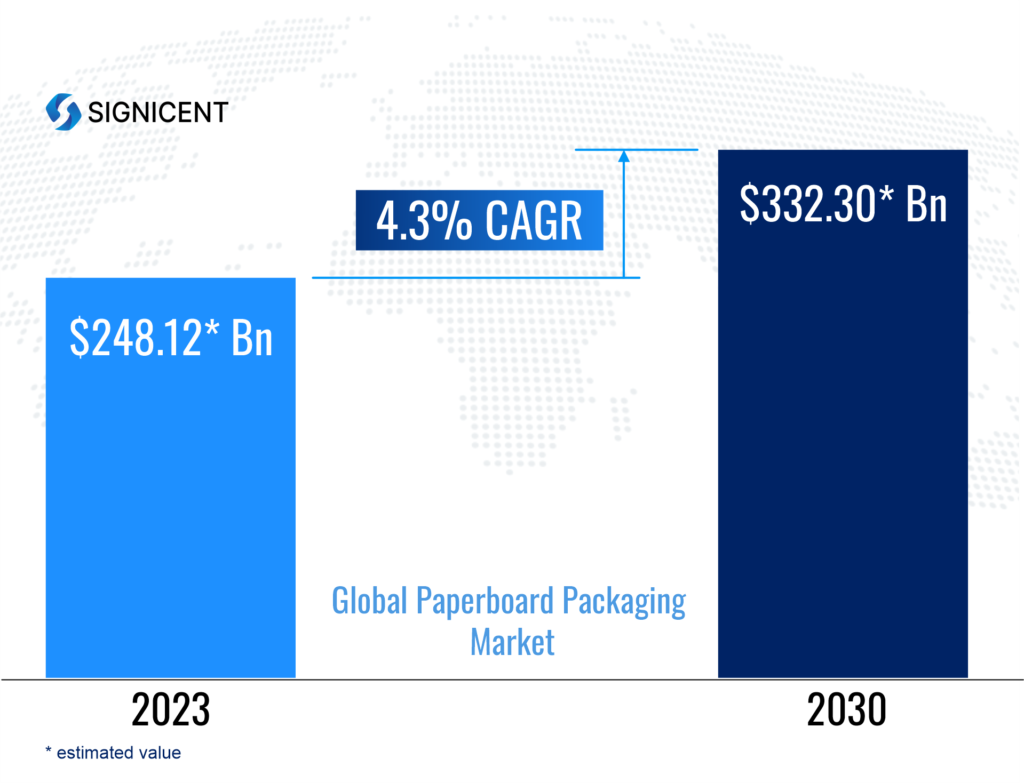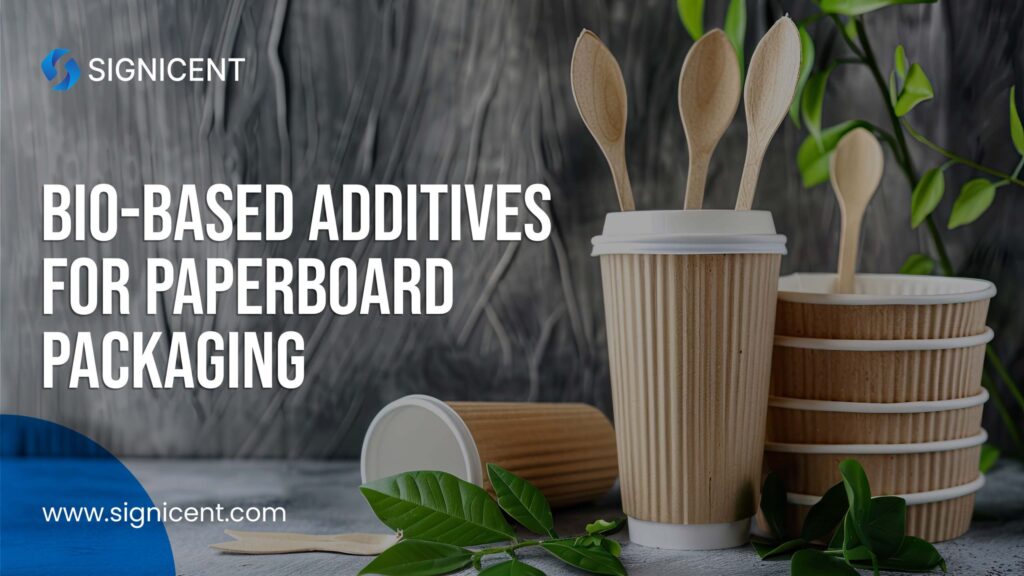As sustainability becomes the driving force behind innovation, industries are seeking alternatives to traditional materials that heavily rely on petrochemicals. In the packaging industry, particularly in paperboard packaging, chemical additives play a pivotal role in enhancing the performance of products. However, the environmental cost of petrochemical-based additives has led to the exploration of sustainable, bio-based alternatives. In this blog, we explore how innovative, sustainable functional additives—derived from waste materials like antioxidants, barrier coatings, and nanoparticles—are revolutionizing paperboard packaging.
Signicent offers comprehensive Design Patent Search services, ensuring novelty through global prior art searches, AI-powered tools, competitor monitoring, and detailed reports for optimal design protection.
Drawbacks of Traditional Petrochemical Additives
While petrochemical-based additives have been widely used in paperboard packaging, their disadvantages have prompted a significant shift toward bio-based alternatives. Some of the key drawbacks include:
- Environmental pollution: Petrochemical additives often leave behind harmful residues that contribute to long-term pollution of ecosystems.
- Non-biodegradability: These additives are not easily broken down in nature, causing lasting damage to the environment.
- Finite resources: Petrochemical-based products rely on non-renewable resources, which are depleting rapidly and contributing to energy crises.
- Health risks: Some petrochemical additives are toxic and may pose risks to human health when they come into contact with food or other sensitive products.
Signicent provides in-depth Biological Sequence Search services, utilizing advanced algorithms for DNA, RNA, and protein sequences to ensure novelty, prevent infringement, and offer strategic insights.
Why shift to bio-based packaging?
As regulations tighten and consumer preferences shift towards sustainability, bio-based packaging is gaining momentum. Companies are aligning with green goals, reducing reliance on finite petrochemicals. With advancements in materials like seaweed and cellulose. Expect significant adoption by 2030, aligning with global sustainability targets and enhancing market competitiveness.
Main benefits of using sustainable additives
Sustainable additives not only reduce reliance on fossil fuels but also introduce several benefits that improve both the quality and environmental footprint of paperboard packaging:
- Strengthening agents: Provide tensile and compressive strength, increasing the durability of packaging.
- Anti-oxidants: Protect the packaged goods from oxidation, improving shelf life.
- Anti-microbial properties: Prevent microbial contamination, especially crucial in food packaging.
- Moisture & vapor barrier: Keeps products safe from moisture damage, making packaging more reliable in diverse conditions.
- Printability enhancement: Supports high-quality printing with reduced ink usage, ensuring efficient branding and consumer communication.
- Thermal and Flame Retardancy: Enhances safety standards, especially in sensitive industries like electronics.
Signicent provides comprehensive Technology Landscape Analysis, identifying emerging trends, key innovations, competitors, and market opportunities, enabling clients to make informed, strategic decisions for growth.
Innovative Sustainable Solutions
Bio-based, naturally occurring additives present a sustainable alternative to petrochemical-based products. Derived from renewable sources, these solutions address the drawbacks of traditional additives while maintaining or even improving the functional properties of paperboard packaging:
- Glyoxal: This natural cross-linker enhances the structural integrity of paperboard, increasing its strength without relying on synthetic chemicals.
- Chitosan & seaweed extracts: These provide antimicrobial properties and improve barrier functions, especially in food packaging where hygiene is critical.
- Cellulose and starch-based additives: Widely available and biodegradable, these additives contribute to the durability and printability of paperboard packaging while remaining environmentally friendly.
- Nano-particles from bio-based materials: These tiny particles derived from natural sources offer superior resistance to moisture and heat, making them ideal for packaging food, electronics, and other consumer goods.
By focusing on bio-based, waste-derived materials like antioxidants, anti-microbial agents, and nanoparticles, companies are developing innovative solutions that enhance the performance of paperboard packaging without compromising sustainability.
Global Market Research
According to a report by Signicent’s Market Research, the global paperboard packaging market size is likely to reach values in the ranges shown below.

The sustainable packaging industry is projected to experience significant growth, with a particular focus on bio-based additives. Key factors driving this market include:
- Consumer Demand for Green Packaging: The shift toward sustainability is increasingly influencing purchasing decisions.
- Regulatory Push: Governments worldwide are enforcing stricter regulations on single-use plastics and petrochemical additives, further boosting demand for eco-friendly alternatives.
- Innovation in Bio-Based Materials: Ongoing research and development in bio-based materials are opening new possibilities in packaging applications.
Key Players in the Industry
The market for sustainable paperboard packaging is growing, and several key players are leading the charge with innovations in this space:
- Stora Enso – Specializes in renewable materials for packaging and leads in sustainable paperboard solutions.
- Mondi Group – Known for their eco-conscious packaging innovations, focusing on sustainability and recyclability.
- Smurfit Kappa – A pioneer in sustainable packaging, offering products that reduce environmental impact.
- WestRock – Integrates sustainable additives into their paperboard packaging to meet evolving consumer demands.
- UPM Raflatac – Known for pushing boundaries in sustainable packaging solutions using renewable materials.
Consumer Response and Signicent’s Role
Consumers are increasingly opting for brands that prioritize sustainability. In response, industries are under pressure to innovate and implement green packaging solutions. However, identifying the right additives and technologies is a complex task. This is where Signicent’s Technology Intelligence come into play:
- White-Space Analysis: Identifies market gaps where companies can introduce new, sustainable packaging solutions.
- Freedom to Operate (FTO): Ensures that companies can integrate new sustainable additives without infringing on existing patents.
- Technology Assessment & Valuation: Provides insights into the most viable bio-based additives based on current research and market needs.
Conclusion
The future of paperboard packaging lies in adopting sustainable, functional additives. By incorporating bio-based materials such as glyoxal, chitosan, and nanoparticles, the industry can enhance packaging performance and reduce environmental impact. As consumer demand for greener solutions grows, Signicent’s Technology Intelligence and Market Insights provide companies with the tools they need to navigate this evolving landscape. Sustainable additives are not just a trend—they are the future of packaging innovation.
About Signicent LLP
We assist businesses globally in their technology innovations, R&D, new product development, patents, valuation, product commercialization & market research needs.
Services Offered:
- Patent Landscape
- Patent Portfolio Analysis
- Patent Invalidity Search
- Patent Licensing Services
- Freedom to operate (FTO)
- Chemical Structure Search
- Design Patent Search
- Technology Scouting
- Technology Landscape Analysis
- Technology gap analysis
- Technology Intelligence
- Market Research
- Bio Sequence Search
- Manufacturers Search/ Supplier search
Elevate your Innovation and Research with Signicent’s cutting edge approach to assist you with Technology and Market related matters alongside the IP aspect of the analysis.


